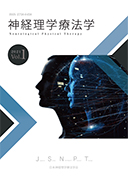Volume 1, Issue 1
Displaying 1-7 of 7 articles from this issue
- |<
- <
- 1
- >
- >|
Contents
-
Article type: Contents
2022Volume 1Issue 1 Pages 0-
Published: June 29, 2022
Released on J-STAGE: June 29, 2022
Download PDF (75K)
Original Article
-
Article type: Original Article
2022Volume 1Issue 1 Pages 1-11
Published: June 29, 2022
Released on J-STAGE: June 29, 2022
Download PDF (539K)
Case report
-
Article type: Case report
2022Volume 1Issue 1 Pages 12-19
Published: June 29, 2022
Released on J-STAGE: June 29, 2022
Download PDF (825K)
Review
-
Article type: Review
2022Volume 1Issue 1 Pages 20-26
Published: June 29, 2022
Released on J-STAGE: June 29, 2022
Download PDF (568K) -
Article type: Review
2022Volume 1Issue 1 Pages 27-30
Published: June 29, 2022
Released on J-STAGE: June 29, 2022
Download PDF (457K) -
Article type: Review
2022Volume 1Issue 1 Pages 31-35
Published: June 29, 2022
Released on J-STAGE: June 29, 2022
Download PDF (489K)
Editorial Board
-
Article type: Editorial Board
2022Volume 1Issue 1 Pages 36
Published: June 29, 2022
Released on J-STAGE: June 29, 2022
Download PDF (59K)
- |<
- <
- 1
- >
- >|
